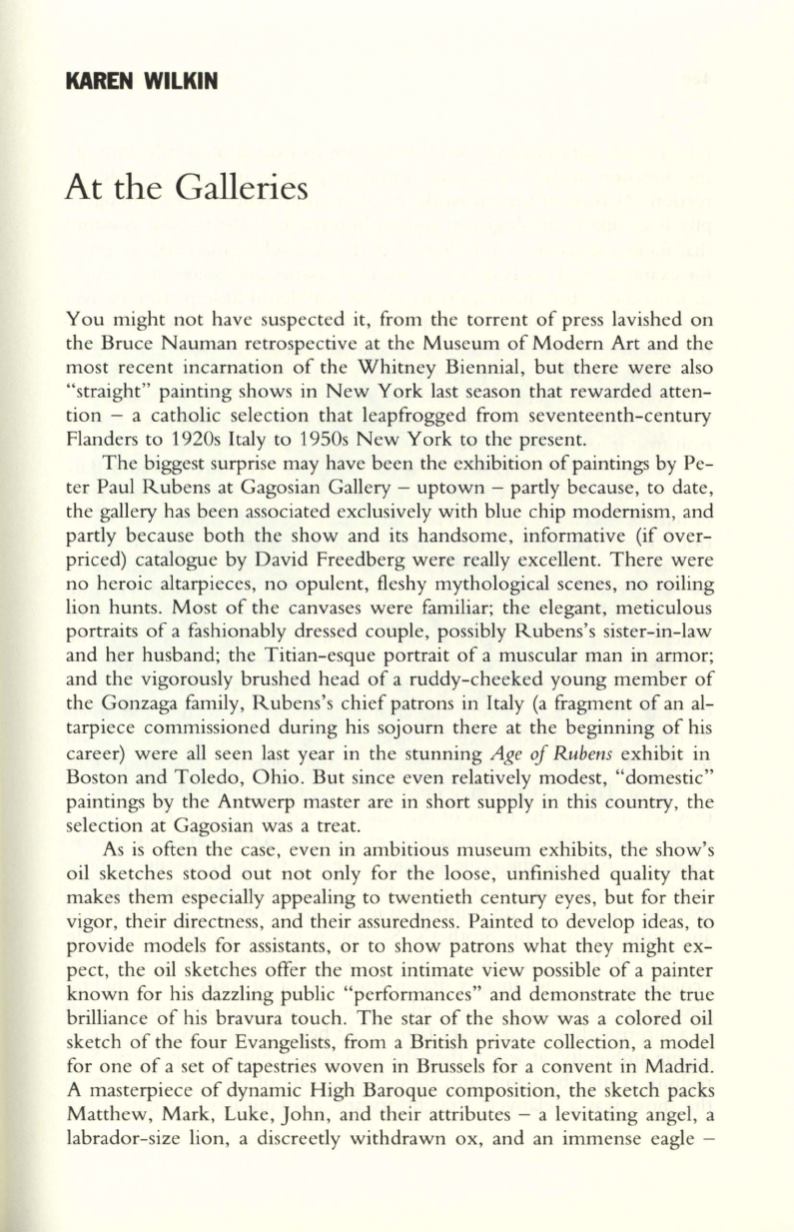
KAREN WILKIN
At the Galleries
You might not have suspected it, from the torrent of press lavished on
the Bruce Nauman retrospective at the Museum of Modern Art and the
most recent incarnation of the Whitney Biennial, but there were also
"straight" painting shows in New York last season that rewarded atten–
tion - a catholic selection that leapfrogged from seventeenth-century
Flanders to 1920s Italy to 1950s New York to the present.
The biggest surprise may have been the exhibition of paintings by Pe–
ter Paul Rubens at Gagosian Gallery - uptown - partly because, to date,
the gallery has been associated exclusively with blue chip modernism, and
partly because both the show and its handsome, informative (if over–
priced) catalogue by David Freedberg were really excellent. There were
no heroic altarpieces, no opulent, fleshy mythological scenes, no roiling
lion hunts. Most of the canvases were familiar; the elegant, meticulous
portraits of a fashionably dressed couple, possibly Rubens's sister-in-law
and her husband; the Titian-esque portrait of a muscular man in armor;
and the vigorously brushed head of a ruddy-cheeked young member of
the Gonzaga family, Rubens's chief patrons in Italy (a fragment of an al–
tarpiece commissioned during his sojourn there at the beginning of his
career) were all seen last year in the stunning
Age of Rubens
exhibit in
Boston and Toledo, Ohio. But since even relatively modest, "domestic"
paintings by the Antwerp master are in short supply in this country, the
selection at Gagosian was a treat.
As is often the case, even in ambitious museum exhibits, the show's
oil sketches stood out not only for the loose, unfinished quality that
makes them especially appealing to twentieth century eyes, but for their
vigor, their directness, and their assuredness. Painted to develop ideas, to
provide models for assistants, or to show patrons what they might ex–
pect, the oil sketches offer the most intimate view possible of a painter
known for his dazzling public "performances" and demonstrate the true
brilliance of his bravura touch. The star of the show was a colored oil
sketch of the four Evangelists, from a British private collection, a model
for one of a set of tapestries woven in Brussels for a convent in Madrid.
A masterpiece of dynamic High Baroque composition, the sketch packs
Matthew, Mark, Luke, John, and their attributes - a levitating angel, a
labrador-size lion, a discreetly withdrawn ox, and an immense eagle -


